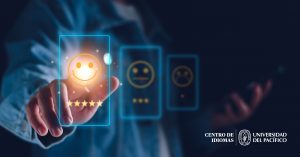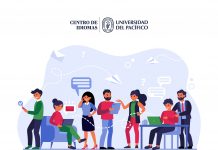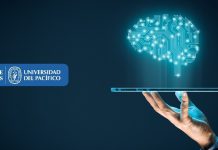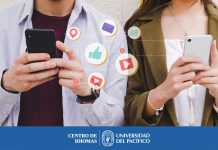In 2022 most Peruvian students returned to face-to-face classes. However, the number of pupils enrolled decreased significantly (1). This year the situation seems somewhat better; however, a major problem lies in wait for attention. We need to close the gap caused by the learning loss (2) that came to pass during reign of the virus. To do this, it is necessary to identify what skills or competencies were developed or left undeveloped during the pandemic. How does this affect the language learning process?
The basics.
When teaching a new group, it is required to make at least a general diagnosis to learn something about our students. Knowing their names or identifying their level of English is not enough, especially now after the pandemics. We should find out, for instance, what apps they have learnt to use, and how and when they are using them. Probably other more important aspects that we should also find out about are their ability to understand what they read, their facility to express what they want orally or in writing, and their capacity to use critical thinking. No less important will be to find out whether and to what level they have developed autonomy.
The more we know about our students, the better we can guide them in learning. Finding out basic information such as what applications they know how to use will help us identify what motivates them, something that will allow us to capture their attention. Probing about deeper processes, such as their level of reading comprehension, will permit us to set more precise objectives; objectives that go beyond learning new vocabulary. If we want better results, the methodology to be used must take into account what may affect the teaching-learning process.
Moreover, if we want to see results along the process, we need to regularly evaluate, because we need to know if there is improvement. Diagnosis is the beginning. Then, establish long, medium- and short-term objectives.

How do we evaluate during the teaching-learning process?
This is probably the most difficult part, because now students can resort to thousands of aids on the Internet to do any written or even oral work. Should we proscribe, for example, the use of ChatGPT? Can we actually prohibit it? This very article could have been written by this tool or by an online translator. Would we teachers notice the difference? Would it be relevant to know if it was done by a person or by artificial intelligence? We must have a clear objective when evaluating and for this we must also be clear about the purpose of the text in this example: is it to demonstrate language skills, is it to teach how to write in English, is it to share information about methodology or classroom experiences? Only by being clear about the objectives, will we be able to make a correct evaluation. We can use the same criteria when assessing our students, or when assigning an oral or written expression exercise. We must be able to clearly determine what we want to achieve with a given exercise, so that, after a critical analysis, we can evaluate whether the objective has been achieved.
Matrix style learning Vs. human brain style learning
Let´s keep in mind that ChatGPT is an artificial-intelligence (AI) chatbot, like many other chatbots, or apps is characterized by being able to have access to an unimaginable amount of data, which is beyond the reach of human beings. They just process and reproduce information that we feed them or place within their reach, so they have not shown intelligence yet. Michio Kaku (4) states that our brain is different to mechanisms because it learns by itself and corrects its previous mistakes; it´s a “learning machine.”
Unfortunately, we don’t always take full advantage of technology. A very simple and domestic example is the use of the microwave oven at home. How many of us use this home device efficiently? Are we taking full advantage of its potential if we only use it to heat food, for example? Tools such as ChatGPT should be used for the benefit of learning. I don’t think we should ban them but rather encourage their intelligent use. This device is very useful, for example, for gathering information on any topic, including preparing exercises to help us evaluate language use in class. It will give us parameters, topics, ideas on how to organize the questions. However, these proposals will not be customized for our group of students. This is where information about the needs and characteristics of our students will become very important for us. No less important will be the objective behind the proposed exercise. Students should be aware that they are not computers and consequently learning won´t happen by just collecting or copying information as, in a way, Neo (the main character) in the film The Matrix does.

In general, we want our students to be able to express their ideas or opinions, or to judge and argue their position with evidence; to communicate in any real situation. The ample information that we can obtain with artificial intelligence is just that, data. The challenge will be to establish questions and situations in which students are forced to contrast and adapt this material. In the case of basic level students, they will also have models of how to express certain ideas and they will take those structures or vocabulary that can be used to communicate. In the case of more advanced students, they will have access to more information from which they will have to choose what they can use to express themselves, but they will also have to investigate and go deeper to be ready for their teacher’s or classmates’ unexpected questions, just as it happens in a real life situation.
Considering that what most people want to achieve is to speak in the language they are studying, I would be inclined to give more weight to oral exams in which students answer “surprise” questions related to the topics they have been working on in class. A real interaction is unpredictable, so students must build their knowledge of the language to the level of being able to use it without hesitation or delay. They should be prepared for real circumstances, so their learning journey must be personalized.
I would leave written assessments such as essays as part of the learning support. The students can use any tool they want, from a book to the computer, but the question will have to be designed in such a way that it cannot be answered in a mechanical way, or one in which they can cut and paste what they find. Rather, they should be encouraged to make the information they find applicable to their everyday context. It is possible that they will copy something, but it will be considered as part of the process of collecting and using the models that best fit their way of thinking.
Let´s encourage their curiosity and let them explore the different tools to get them ready to succeed in a context in which they will have to coexist with artificial intelligence.
(1) Jara, Mariela (2022) Inequality in Peru’s Education Sector Deepens in Post-Pandemic Era. Inter Press Service. https://www.globalissues.org/news/2022/09/22/31960
(2) CEPLAN (2023) Reporte 2023 Riesgos y oportunidades globales y nacionales para el Perú 2023-2033
(3) Kaku, Michio (2011): Could We Learn Skills “Matrix”-Style? https://www.youtube.com/watch?v=m6mUj1W9UZo











The future of education is gradually changing. As teachers, we’ll have to stress concepts and principles, rather than just plain memorization. Artificial intelligence has the potential to revolutionize the way education is delivered, making it more accessible and personalized to students worldwide. Online learning platforms powered by artificial intelligence can provide students with access to education in remote locations at a lower cost. This can be extremely valuable for students who live in poverty or who form part of rural and indigenous populations in Peru. However, new artificial intelligence technologies like ChatGPT and Google’s Bard are raising concerns on plagiarism in education. They can bring similar benefits to those of a calculator while also presenting the disadvantage of inaccuracy like that of Wikipedia. Educational institutions need to carefully consider the risks and opportunities associated with artificial intelligence in order to implement the right policies and procedures. It’s important to stress that artificial intelligence will never be able to provide the same level of warmth, emotional support, and inspiration that a teacher can. It should be seen strictly as a tool to enhance and expand the role of teachers, not to replace them.
Comments are closed.